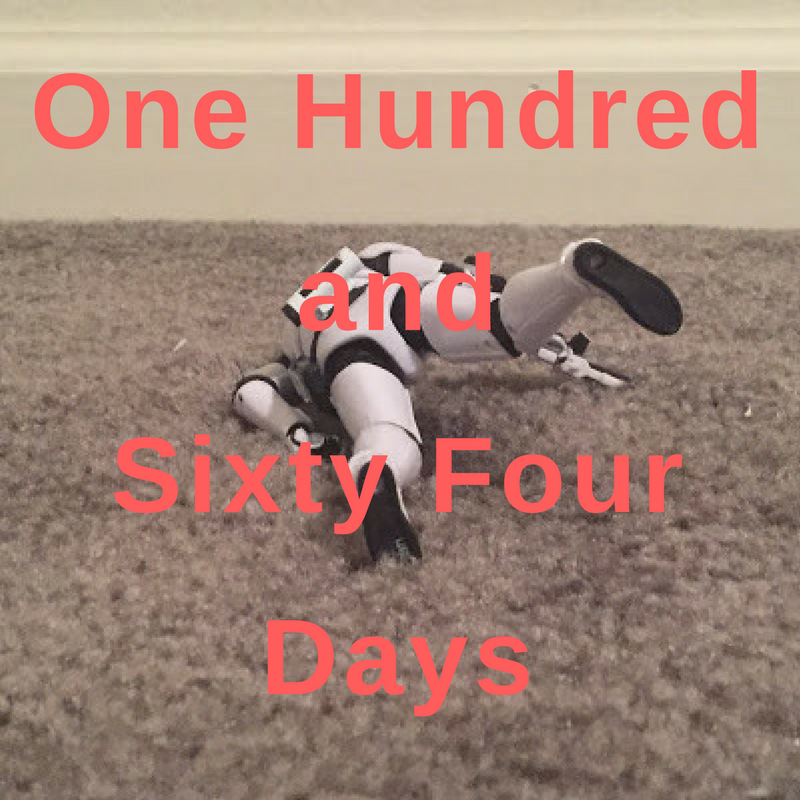
"Venom" by Dennis O'Neil, Trevor Von Eeden, Russell Braun, and Jose Luis Garcia-Lopez
After two storylines that could fairly be ranked with among the best Batman stories of the period, if not ever (
"Gothic" and
"Prey"), all the momentum that
Legends of the Dark Knight had built by its second year came screeching to a halt in the pages of "Venom." This happened despite the killer art team of Trevor Von Eeden, Russell Braun, and Jose Luis Garcia-Lopez working together to produce five issues of excellent adventure cartooning with an Alex Toth feel. The reason for this dramatic car crash can only be laid at the foot of one man, and it's a familiar name: Dennis O'Neil, longtime Batman writer and editor, and the writer of the first
LotDK arc, the strange and underwhelming
"Shaman."
It was easy to be kind to "Shaman," even if the story was a mess, because it was clear that O'Neil was striking out into relatively virgin territory. "Venom" suffers considerably for being a mess that comes on the heels of two very good stories that successfully mapped the space where interesting Batman stories could be told in this format. But over and above the fact that the story itself is a mess, its premised on a central idea so singularly, spectacularly awful that there's very little even the best creators could have done to salvage it - and we know this for a fact because we've got the dream team of Von Eeden, Braun, and Garcia-Lopez working their collective asses off to polish this turd. (I really don't want to undersell the art - it's gorgeous, but all for naught.)
Not to beat around the bush, the problem here is simple: "Venom" is the story where Batman gets hooked on drugs.

One year previous, Captain America had suffered through his own drug problem, in the pages of the thoroughly odd
"Streets of Poison" storyline that ran from
Captain America #373-378. Even though the story itself may have been problematic, the motivation behind "Streets of Poison" was sound. The prevalence of performance-enhancing drugs in athletics first became a major public health concern in the late 80s and early 90s. (Anabolic steroids weren't even illegal until 1990, at which point they were added to Schedule III of the Controlled Substances Act.) This side skirmish of the "War on Drugs" was notable at least partly for the fact that steroid use was seen as popular among a far different demographic than that which had previously been targeted by law enforcement for drug abuse in the 80s - white middle class young men, to say nothing of wealthy professional athletes. It was difficult to make the argument that steroids were as harmful as other narcotics when the people who used steroids were often successful, sexy, and wealthy.
Mark Gruenwald, then in the middle of his lengthy run on
Captain America, recognized a problem in the makeup of Marvel's star-spangled hero: Cap's origin was, basically, steroids. In order to address this, "Streets of Poison" inserted Cap into the "War on Drugs" in a most unusual way. While becoming involved with street-level enforcement against drug smugglers, Cap was caught in an explosion during which he inhaled a massive amount of Ice. Ice, for those who aren't "in the know" on their street drug talk,
is a real drug, a nasty stimulant with effects similar to methamphetamine crossed with cocaine. Not knowing that he had inhaled enough of the stuff to kill a horse, Cap spent the next couple days running around New York, getting progressively more erratic and dangerous, until finally being caught and given a total blood transfusion in order to clear the effects of the drug from his system. This had the salutary effect of cleaning the Super Soldier Serum out of his body, leaving him at slightly less than peak capacity but feeling better for the fact that he was no longer quite so much of a walking billboard for steroid use aimed directly at the children of America.
(It should be noted that this development had to be walked back just a few years later, when Gruenwald established in the
"Fighting Chance" storyline that the remnants of the Serum in his system were slowly killing him. At the beginning of Mark Waid's run he received another total blood transfusion, this time from from the Red Skull [in Cap's cloned body], that restored the serum with no more deleterious side effects, where it had remained until very recently. A year ago Rick Remender
again drained the Serum from Cap's body, this time with the effect of allowing the decades of aging which the Serum had mooted to rush back all at once, making him a frail old man, albeit one who still manages to
get stuff done.)
(Also: "Streets of Poison" is very goofy in places - Cap does a chicken dance at one point - but it has much to recommend it. It's something of a follow-up to Frank Miller's run on
Daredevil, using a b-plot to pit the Kingpin against the Red Skull for some portion of the New York drug trade. Also, it was the first use of Bullseye since the character had been sidelined in
Daredevil #200 [not by Miller himself, but none other than Dennis O'Neil, still cleaning up loose ends from Miller's run], when Bullseye was hospitalized after a definitive beating at DD's hands. As strange as it might seem now, Bullseye was out of commission for
over five years at the time, so
his breaking out of jail to kill Cap was a pretty big deal. Also, while high on Ice
Captain America beats Daredevil so badly that he literally
spent six months as an amnesiac in his own book. I don't believe Cap ever apologized for that?)
In any event, as awkward in execution as these kinds of anti-drug "after-school special" stories may have been, "Streets of Poison" at least managed to finish up without seriously compromising Cap's character in any way. He was involuntarily dosed and lost his mind, but he got better and everything wrapped up with a nice anti-drug message (except for poor Daredevil, who received a severe traumatic brain injury which no one else seemed too worried about). "Venom" tries mightily for the level of plausibility of "Streets of Poison." It fails from the very beginning, when Batman willingly begins taking performance enhancing substances.

You can do a lot with Batman, as his over seventy-five years of continued publication should make abundantly clear. But there are a few no-no's about which I think most readers and creators would agree: Batman doesn't kill (except in the movies when he does all the time, sadly), Batman doesn't use firearms, Batman never gives up, and -
this one should noy even need to be said - Batman doesn't take drugs.
The story concocts circumstances under which, the logic goes, we are to believe Batman is brought face-to-face with his biological limitations in such a significantly traumatic way as to baffle his better judgment. The story begins with Batman failing to save a little girl from drowning, due to his inability to lift a giant boulder blocking an underground tunnel. This is a bummer, admittedly. He later pulls a muscle lifting weights and gets beat up by some thugs who wouldn't normally have presented much of a problem, but he's having an off day. All of these actions themselves are fine: failure to save an innocent life would certainly spur Batman on to work harder, and it's been shown in the past that a tendency to push himself past human limitations is one of his few weaknesses. But even here - even in
Legends of the Dark Knight's continuity-lite "One Year Later+" time frame - I can't believe for so much a single second that any Batman, ever, under
any circumstances, would do what Batman does on the page above.
Getting Batman hooked on drugs is just part of a larger plan on the part of the above doctor, Randolph Porter (the father of the aforementioned dead girl) and retired General Timothy Slaycroft to develop a drug that will enable the United States to field an army of, well, super soldiers. If you guessed that Porter is a bad dude just from that page, congratulations, you're smarter than Batman, who should have figured out Porter wasn't playing with a full deck when he didn't really seem upset at the news that his daughter had drowned in the sewers as the result of a kidnapping plot designed to get at his designer drugs. (It's implied he was in on the plot, concocted with the purpose of bringing Batman into their orbit.) General Slaycroft isn't a nice person either, which we know because he eventually sacrifices his son Lil' Timmy Slaycroft Jr. to be a guinea pig for more of Porter's drug testing. (We later find out, incidentally, that Slaycroft killed his wife because she was coddling Timmy, so, you know, evil military guy.)

After being asked by Porter to murder James Gordon in exchange for another dose of pills, Batman
finally realizes he's made a big mistake. And here we see Batman's idea of rehab, which involves locking himself in the basement for 31 days. Not 28, not 30, but 31
exactly. At which point Bruce emerges from having spent a month in the cave with six month's beard and hair growth, which is pretty impressive. The story tells us that
the time spent detoxing from Venom and recovering physically was
six months. Meaning there was a six month period right at the start of Batman's career where he disappeared. No one ever mentions this again, even though technically it should bring the series firmly into the territory of "Year Two" (but please God let us hope we never actually get to
Year Two.)

From here, Batman has to track down Porter and Slaycroft after they flee the country, heading to a small Caribbean island named Santa Prisca (previous introduced by O'Neil during his run on
The Question). But at this point you're just reading out of a sense of obligation. Even
the promise of Batman fighting a shark can only do so much to salvage this mess. But since we're here, let's look at this shark fight, anyway. (Again, it's about as beautiful as a shark fight can possibly be - it's not the artists' fault this story is so awful.)
Upon reaching Santa Prisca, Batman's plane is shot down by an RPG. Alfred - still wearing his butler's tuxedo, because why not - is captured by General Slaycroft soon after. They tie Alfred to stakes far enough off the beach to represent a significant swim, but not before cutting his feet and ankles to attract sharks.




Do you see the problem? Please tell me you see the problem.
Remember earlier when I said there was a hard-and-fast list of things that Batman should never do. What was the first thing on that list. The
very first thing, even above taking drugs. You can scan back to look, it's OK, I'll wait.
Batman doesn't kill. Except when it's a couple Hispanic fishermen who tried to hit Alfred with an oar, apparently, in which case it is
totally acceptable to feed them to hungry sharks. Even better if you do so while making a "shark repellent" joke, because oh boy there's nothing we like to do more than remind ourselves about how much better and more mature we are than
Batman '66.
At this point in the story we've seen Batman become a junky and feed people to sharks. Lovingly rendered, sure, but seriously. The worst part is, it's not even done yet. Batman is captured by the bad guys after being clobbered by Lil' Timmy (who has been turned into a giant monster), and is then locked in a room with the world's worst deathtrap. What makes this deathtrap so terrible, you ask?
Batman is locked in a room with a leaky pipe that will fill the room with water in exactly two days. In order to open the airtight door that will release the water and allow Batman to survive, he has to be able to pull down a chain to open an 800-pound steel door, which he will only be able to physically accomplish unless he takes more Venom. But hey, they left Batman in a locked room for two days, I'm sure he could never think his way out of this problem.

But hey, turns out that even though Batman is smart, he's still not
that smart. Do you see the problem with his plan?
It's a simple problem, really. He's making more work for himself than he needs to. He doesn't
have to open the door a crack and then rush out before it slams shut again. He's racing against rising waters, so all he needs to do is open the door enough for the water to drain. After that, one of two things will happen: either someone will come into the room to figure out why the hallway is filled with water (at which point he can beat them up and get out that way, because he's Batman), or he'll have enough time to chisel out another block or three to to add to the counterweight. As it is, he ends up almost getting cut in half by the falling door because he's a nimrod. (And boy, it's a good thing that extraordinarily sturdy table wasn't Ikea, hey?)
So then it's just a matter of capturing the bad guys, etc. But there's one more plot point I should mention, just in case you were worried there wasn't another remarkably stupid thing hiding out in this remarkably stupid story. Here we see Porter and Slaycroft (which would be a great name for a 70s soft rock duo) relaxing in their villa, not too worried that Batman is somewhere out in the surrounding jungle.

Do you see what they did there? Think about the time frame for a minute: "Venom" was released in 1991. By that time, according to post-
Crisis math, Batman had been in operation since the early 1980s, the period in which this story is set. If you remember
our previous discussion of Cloak & Dagger, you should recall that crack cocaine first rose to prominence in the United States in the mid-80s. So even though Denny O'Neil doesn't say it directly, the implication is pretty obvious: in the DC Universe, crack cocaine was the product of the same mad scientist who created the super-steroid Venom.
Good times, good times.
Strangely enough for such a singularly irredeemable story, "Venom" would go on to have significant consequences for the regular-continuity Bat-books. "Venom" was published in mid-1991, and in late 1992 DC introduced a new villain named Bane. Bane was designed as the ultimate "anti-Batman," a formidably smart
and strong character who comes to Gotham in 1993 for the express purpose of defeating Batman. This storyline became "Knightfall," the most important Batman story of the decade (please note I didn't say "best," although I do think it holds up pretty well, and Bane remains one of my favorite villains). Bane's origin ties into "Venom" in two ways: one, he's a native of Santa Prisca, and two - at least at the outset of his story - he's addicted to Venom. (Strangely, Bane eventually detoxes from Venom using a method similar to Batman's: after "Knightfall," in
Vengeance of Bane II, he's sent to Blackgate Prison, at which point he suffers greatly from Venom withdrawal. He's thrown into solitary confinement for a couple month . . . and uses that time in the hole to reshape his body and mind. He would remain sober for the remainder of pre-
Flashpoint continuity.)
Just like Superman needed to kill a guy just to "get it out of his system" at the start of his career, Batman needed to try drugs just to see what would happen. That's the story logic behind "Venom." Also, it's totally cool to throw brown people to sharks if they commit the cardinal sin of trying to hit your butler with an oar. For someone with decades of experience working on Batman stories, Denny O'Neil somehow has very little understanding of how Batman should operate. Even though this is still the young, untested Batman of "Year One" (a premise that is, again, stretched pretty hard by the six month gap here), it is still well nigh inconceivable that any Batman would ever do many the things he is depicted as doing in this story. What the fuck, man.
What the fuck.



















